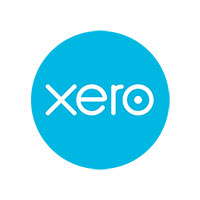FAQs
What is the Job Retention Scheme?
Effectively it is a subsidy to encourage employers to keep staff on their books as an alternative to redundancies.
Essentially it means putting employees on temporary leave of absence, with some pay. It is intended to be flexible enabling employers to call employees back to work as required. The subsidy is in the form of a grant from the Government to cover 80% of “furloughed employees” wages, up to a maximum of £2,500 per employee per month, plus associated employer national insurance contributions and minimum employer auto-enrolment pension contributions.
Which employees can the grant be claimed for?
Any UK employer with a UK bank account will be able to claim, but the employee must have been on your PAYE payroll as at 28 February 2020. The employee can be on any type of contract. This includes flexible or zero hours contracts.
If an employee was made redundant after 28 February 2020, the employer can agree to re-employ that individual and place him or her on furlough instead. No claim can be made in respect of employees hired after 28 February 2020.
Employees on sick leave or self-isolating should get statutory sick pay, but can be furloughed after this. Employees who are shielding in line with public health guidance can be placed on furlough.
Once agreed, the employer must write to the employee confirming they have been furloughed to be eligible to claim. The employer should retain a copy of that correspondence.
Employees with more than one employment can be furloughed in respect of each of their employments. Alternatively, they could be furloughed in respect of one employment and continue to work in respect of another. The 80% of their normal wage up to a £2,500 monthly cap applies to each employment.
Where employers receive public funding for staff costs, and that funding is continuing, the government expects employers to use that money to continue to pay staff in the usual fashion and, so not furlough them.
This also applies to non-public sector employers which receive public funding for staff costs. Organisations which are receiving public funding specifically to provide services necessary to respond to COVID-19 are not expected to furlough staff.
Do I need to get agreement from my employees before designating them as furloughed workers?
Unless there is a right to furlough in the employment contract, employers must gain agreement with their employees on designating them as a furloughed worker and reducing their pay to 80%.
As employees who refuse furlough may be at risk of redundancy or termination of employment, it is not anticipated that if this is explained to them, that they will withhold agreement. The employer can still make employees redundant while they are on furlough or afterwards.
Can employees do any work for me during furlough?
Once employees are on furlough, they will not be able to work for their employer. They can undertake online training or volunteer, subject to public health guidance, as long as they are not making money for their employer or providing services to their employer.
If employees are required to, for example, complete training courses while they are furloughed, then they must be paid at least the national minimum wage for the time spent training, even if this is more than the 80% of their wage that will be subsidised.
Is there a minimum period for which employees must be furloughed?
There is no minimum period for a furlough, unless the employer has agreed a minimum period with the employee. However, the grant can only be claimed in respect of an employee who has been furloughed for a minimum period of three weeks.
The employer can place an employee on furlough more than once, and one period can follow straight after an existing furlough period, while the scheme is open. For example, if an employee is brought back to work to cover work for an employee who is sick, that employee can be furloughed again once the other employee returns to work. A claim can be made for the furloughed pay for each any period of furlough which lasts at least three weeks, for the duration of the scheme.
What do I need to pay furloughed employees?
Employers must pay furloughed employees at least 80% of their usual monthly earnings, up to a maximum of £2,500.
They can choose to pay employees more than the 80% or £2,500, but they are under no obligation to do so.
Employees will still pay income tax, national insurance contributions and any other deductions from wages.
The minimum amounts that have to be paid and can be claimed for depend on the nature of the employment.
- Employees on a salary – the actual salary as at 28 February 2020 which is used to calculate the 80%. Fees, commission and bonuses should not be included.
- Employees on variable pay (eg. zero hour contracts):
- If employees have been employed for a full 12 months prior to the claim, the 80% is calculated on the higher of either:
- the amount the employee earned in the same month in the last year; or
- an average of their monthly earnings from the 2019/20 tax year.
- If they have been employed for less than a year, the 80% is calculated on an average of their monthly earnings since they started to work.
- If employees have been employed for a full 12 months prior to the claim, the 80% is calculated on the higher of either:
If the employee started work in February 2020, the employer will pro rata the earnings from that month.
Pay when on furlough does not have to meet the national minimum or living wage because these rates are only payable for hours worked.
What is the position on tax, employer national insurance and pension contributions?
Wages of furloughed employees will be subject to income tax and national insurance as usual. Employees will also pay automatic enrolment contributions on qualifying earnings, unless they have chosen to opt-out or to cease saving into a workplace pension scheme.
Employers will be liable to pay employer national insurance contributions on furloughed wages paid, as well as automatic enrolment contributions on qualifying earnings unless an employee has opted out or has ceased saving into a workplace pension scheme.
In addition, to the 80% that can be claimed, the employer can claim Employer national insurance contributions and minimum automatic enrolment employer pension contributions on that 80%.
If employers choose to provide top-up salary in addition to the grant. Employer national insurance contributions and automatic enrolment contribution on any additional top-up salary will not be funded through the scheme. Nor will any voluntary automatic enrolment contributions above the minimum mandatory employer contribution of 3% of income above the lower limit of qualifying earnings (which is £512 per month until 5 April and will be £520 per month from 6 April 2020 onwards).
What if I have an employee on/about to go on maternity leave?
Employees must take at least two weeks’ maternity leave (four weeks if in a factory or workshop) immediately following the birth of a baby. This is a health and safety requirement. In practice, most women start their maternity leave before they give birth.
If the employee is eligible for statutory maternity pay (SMP) or Maternity Allowance, the normal rules apply, and they will be entitled to claim up to 39 weeks of statutory pay or allowance. If they qualify for SMP, they will still be eligible for 90% of their average weekly earnings in the first 6 weeks, followed by 33 weeks of pay paid at 90% of their average weekly earnings or the statutory flat rate (whichever is lower).
The statutory flat rate is currently £148.68 a week, rising to £151.20 a week from April 2020. Some employers “top up” statutory maternity pay and their employees are eligible for an enhanced, earnings related rate of pay.
If the employee is eligible for enhanced (contractual) maternity pay from employer, this is included within the wage costs that the employer can claim through the scheme.
The same principles apply if they qualify for contractual adoption pay, paternity pay or shared parental pay.
If an employee is currently pregnant and due to start maternity leave, they will start maternity leave as usual.
If their earnings have reduced due to a period on furlough or statutory sick pay prior to their maternity leave starting this may affect their statutory maternity pay. The same principle applies to contractual adoption pay, paternity pay and shared parental pay.
What will I need to make a claim?
Only one claim can be made at least every three weeks (minimum period of furlough). The employer will need:
- its ePAYE reference number
- the number of employees being furloughed
- the claim period (start and end date)
- amount claimed (per the minimum length of furloughing of three weeks)
- its bank account number and sort code
- its contact name
- its phone number
The employer should make claim in accordance with actual payroll amounts at the point at which payroll is run or in advance of an imminent payroll.
The employer must pay the employee all the grant it receives for their gross pay, no fees can be charged from the money that is claimed.
Please contact Andrew Meredith if you would like to discuss any of the information covered; on 01689 877081 or complete our online form.
Registered as Auditors in the United Kingdom by the Association of Chartered Certified Accountants.
This briefing is intended as general guidance only. It is based on the published guidance as at 26 March 2020.





